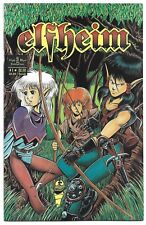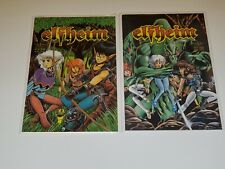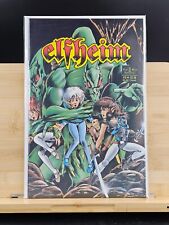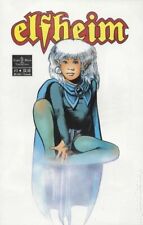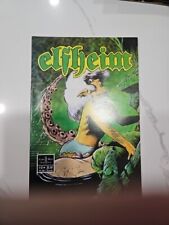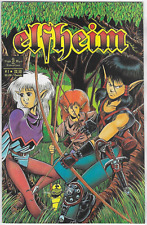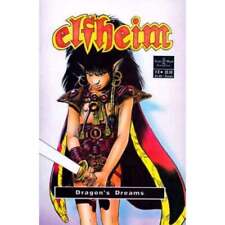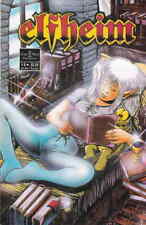Acta Est Fabula (FFX-2, Vegnagun's Attack): From MoogleFan: Latin for 'The Play is Over'.
Aeon from FF10: "aeon" or "eon" is a very long period of time (no specific time constraint is usually given for it). Arcanus Dominus adds: In Gnosticism, Aeons are emanations from the Godhead, and somewhat reminiscent of the Sephiroth in Cabalism.
Aestus (Ability, FFX-2): From Moogle Fan: This means "passionate fire" in Latin. Will Weaver, however, claims it means "summer".
Almagest from FF5: This is the name of Neo Exdeath's attack. About a thousand years ago, Ptolemy wrote a book about astronomy, and when it was translated into Arabic, they called it the Almagest ('al' is Arabic 'the', and 'magest' comes from Greek; the whole thing means 'the greatest'). But it was hardly the greatest, since it put Earth at the center of the solar system :) In fact, the original edition was located in the Great Library of Alexandria, just like FF5's Library of Ancients.
Argent Inc. (FFX-2): From Will Weaver: Argent, Inc., one of the companies vying for control of the Calm Lands tourism industry, comes from the Latin word "argentum", meaning "silver" or "money".
Aurochs from FF10: From WTG3: The Besaid Aurochs (probably) take their name from the aurochs, an extinct European ox thought to be the precursor of modern cattle. However, Alexander Megius-Keyho says that the shell in the Aurochs logo is actually called an auroch.
Avatar (FFXI): weapon_x_33 mentions that in Hinduism an avatar is an incarnation of a god; especially when speaking of Vishnu.
Bells (weapon type): MysticGOE mentions an Anglo-Saxon myth: "Bells are effective in the driving away of evil sprits because when they're rung, the holy essence of the metal is released through the sound waves. The larger the bell, the the better able it is to shatter the dark energy in evil spirits."
Berserker (Job): From Hiryuu: "In Norse it means 'bear shirt'. They were viking warriors with strong ties to Odin, who whipped themselves into a muderous fury before battle. This state may have been caused by drugs (most likely the fly agaric mushroom) or alcohol, or by ritualistic behavior (like drinking bear or wolf blood) or just frenzied dance or other similar behavior. They often wore suits made from bear fur, giving them their name, and often the dellusion that they were or were possessed by bears (although this may have been a purely psychological tactic they used on themselves to convince themselves to be even more rageful). This is also why the Berserker class in FF5 is dressed in animal skins."
 Black Cauldron (attack name, FF7): From Ash Rose: "I am almost certain this is a reference to Lloyd Alexander's Prydain Chronicles series of which the second volume is titled The Black Cauldron. The Cauldron is essentially a device which allows Arawn, the main antagonist, to create an army of the dead by steeping fallen warriors in the evil pot. The Black Cauldron also refers to a poorly reviewed and, honestly, not well made Disney movie of the same name. In this, the antagonist is known as the Horned King (also a character in the original work, but not portrayed the same way in the film), and in game the summon does depict a skeletal figure that looks similar to this standing before the Cauldron."
Black Cauldron (attack name, FF7): From Ash Rose: "I am almost certain this is a reference to Lloyd Alexander's Prydain Chronicles series of which the second volume is titled The Black Cauldron. The Cauldron is essentially a device which allows Arawn, the main antagonist, to create an army of the dead by steeping fallen warriors in the evil pot. The Black Cauldron also refers to a poorly reviewed and, honestly, not well made Disney movie of the same name. In this, the antagonist is known as the Horned King (also a character in the original work, but not portrayed the same way in the film), and in game the summon does depict a skeletal figure that looks similar to this standing before the Cauldron."
Blue Narciss (Boat, FFIX) : weapon_x_33 says the name of the vehicle most likely comes from the Greek myth of Narcissus who as a punishment for falling in love with the nymph Echo, was forced to fall in love with his reflection in a stream and eventually transformed into a flower bearing his namesake. The blue part of the boat's name is likely due to the fact the sails are blue. :P
Cantus Firmus (Ability, FFX-2): From Will Weaver: This is supposed to be Latin for "Solid Song", but it's not grammatically correct. It should be "Canta Firma". Shepherdboy23 adds that it is a type of melody in which counterpoint is added to to create an elaborate fugue.
Cetra from FF7: the Ancients' original name could come from the Latin 'cetera', meaning 'others'... the Cetra were the 'other' race of people who originally populated the Earth.
Chakra (ability): A "chakra" is any one of the seven psychic centers of the body representing passion, pleasure, majesty, love, purity, inner sight, and thought. They occur wherever twelve lines of force in the body meet. Derives from ancient Eastern philosophy.
Charon (Ability, FFX-2): From Moogle Fan: In Greek mythology, Charon ferried souls to Hades over the river Styx. assamite says that Charon is also a Hebrew word meaning 'rage' or 'wrath'.
Chocobos might have gotten their name from a chocolate candy which sold in Japan a few years back (and is still popular). It was called "Chocoballs" and had a picture of a bird on the front. But unfortunately the bird looks nothing like the familiar yellow chocobo that we all know and love... ^_^
Coin Toss (FF7, Ability): From Wayne: "It was in FF7j's code as 'Law', as an inside joke meaning that paying lawyers is throwing away money. Square were having legal trouble at the time. It was finished and activated for the English version."
Comodin (FFU): From Giampaolo Bianchi: The resistance faction from Final Fantasy Unlimited can easily be explained as follows: 'Comodin' literally means 'Joker' in Spanish (as in the card). However, 'comodin' is also used to refer to the wild card in a card game. A wild card, as most everybody knows, is an element that can either enhance or severely cripple someone's game, but isn't the deciding factor therein. This, I believe, ties in with Comodin's functions in FFU's story--they either help or hamper the heroes of the series, but don't really affect the outcome of the story.
Corpus Invictus (Key Item, FFX-2): From Moogle Fan: This means "unconquerable body" in Latin.
D-Type Equipment (FF7): In Dio's Show Room at the Gold Saucer, there are some useless and apparently meaningless artifacts on display. Two of them, though, could be significant. One is the D-Type Equipment, which also shows up in the anime Evangelion, and another is Klein's Pot. It's called Klein no Tsubo in Japanese, which does literally mean Klein's Pot, but could be referring to the Klein Bottle, which is a three-dimensional analogue of the Mobius Strip (see the Mobius entry for how to make one). It's just the kind of fanciful object that would show up in a showroom like Dio's, don't you think?
Dies Irae (FFX-2, Vegnagun's Attack): From MoogleFan: Latin for "Judgement Day" or "Day of Wrath". serrated adds that Dies Irae was the name of a movement or section of Mozart's requiem mass.
Doomsday (FF9): Moogle Fan says in the Japanese version this was Jihad. See Summons (Jihad).
Dreadnaught (FF2): From Cain Highwind: The Dreadnought was a British Navy Warship commisioned in the early 1900s (1902 I think). It also refers to any large warship with powerful gun turrets.
Eidolons from FF9: From The American Heritage Dictionary, 3rd Edition (as sent in by WTG3: 1. A phantom; an apparition. 2. An image of an ideal. (Greek eidolon, from eidos, form)
El Nino (el 'ni-nyo) (FF6): One of Mog's dances (literally 'the boy' in Spanish; the second n should have a ~ tilde on it). But it also refers to a kind of current which creates tropical storms, which makes a lot of sense since it's part of the Water Rondo.
Espers: Esper itself is a made-up word, but it might be related to "hope" (from French; 'a hope' is 'un espoir') or someone who has extra-sensory perception (an ESP-er)... The Squaresoft Repository notes that the word was used in this connotation in a story called "The Demolished Man", by Alfred Bester. It was written in serial form in Galaxy magazine. It was also mentioned in "Solar Lottery" by Philip K. Dick, and "Highways In Hiding" by George O. Smith. A comic series called "Espers" was also published.
Gargant (FF9): Derived from the word gargantuan, meaning huge (seeing as how it's a huge bug).
Genome (FF9): From A.L.: "Genome is a biological term used to describe the genetic information in a somatic cell."
Gil: Damian Maxwell mentions it probably comes from "gilda", Old English for "golden".
Grand Train (Lore Skill, FF6): From James Roessel: believe there was a misspelling of trine as train. Obviously Grand Train in FF6 looks more like some cosmic triangle than any train related spell. A grand trine on the otherhand is a formation of a trinagle between three celestrial bodies in the heavens, an important aspect that is supposed to be beneficial.
Grand Cross (FF5):One of ExDeath's ultimate attacks, masterofunlocking says that some say at the the end of the world, the heavenly bodies will align in the form of a huge cross. Quite fitting for one of the final boss' attacks.
Guado (FF10): Moogle Fan tells me that it's Italian for "woad", a type of plant. Since the Guado look very plant-like indeed, it probably makes sense. And Mush Mordan adds: "The woadwose were supposed to be a humanoid race that tended the forests in ancient anglo myths, much like ents, they looked like humans made from bushes and bark etc."
Hayate (Ability, FFX-2): From Moogle Fan: "Hayate" is Japanese for "storm gust" or "storm gale".
Helios Guard (Garment Grid, FFX-2): From Moogle Fan: In Greek mythology, Helios is the god of the sun.
Hilda Garde (Airship, FF9): Damian Maxwell says this is Battle Glorious" in German, and "Defending Battle Maiden" in Teutonic. Aurora Rosewillow has some better information: "It's a variant of 'Hildegard'. In Scandinavian mythology Hildegard was a Valkyrie sent by Odin to escort battle heroes to Valhalla.
"Hildegard von Bingen, also known as Saint Hildegard, was a German abbess and composer from the 1100's. She was also many other things such as an artist, author, scientist, philosopher, herbalist, poet, and visionary (she was apparently psychic and saw visions from the time she was very young). These traits definitely relate to Hilda's character, who knew spells and alchemy and was able to turn Cid into an oglop."
Hiryuu literally means "flying dragon" in Japanese.
Hokuten (FF Tactics): A.L. says this is Japanese for Northern Sky.
Kamaitachi (Elemental spell, FFT): Moogle Fan writes that this was the name of a monster in Japanese legend. It is said to look like a weasel, and move quickly. They usually assault their prey as a team of three.
Karateka (Job, FF3): Just means "karate student".
Kozuka (Ability, FF10): Yojimbo's regular attack. From Moogle Fan: This is the name of a small Japanese dagger.
Lacrimosa (FFX-2, Vegnagun's Attack): From MoogleFan: Latin for "Flowing Tears".
Lagomorph (FF6): All of the non-winning combinations in Setzer's "Slot" result in "Lagomorph"; a rabbit then runs onto the screen and gives the characters some HP. Well, Lagomorphia is an order in biology which contains rabbits. So it's just a fancy name for "rabbit". Incidentally, in FF6j Lagomorph is called "Mysidian Rabbit", like the city in FF2 and 4 and the Dancer's Animal ability in FF5.
Lakshmi (FF6 (summon), FFXI (server)) From Joseph Singer: Lakshmi is the Japanese name of the esper, Starlet. Since most all of the server names for FFXI are named after the series' many summons, this explains its appearance in XI while not having a corresponding summon in the English versions. Furthermore, Lakshmi is the name of a goddess in Hindu/Vedic lore.
Lord Avon from FF9, the writer of "I Want To Be Your Canary": From VoxNihili8584: Stratford-upon-Avon is famous for being Shakespeare's birthplace.
(FF8): A.L. notes: "The way in which people get out to space is highly reminiscent of Jules Verne's "From the Earth to the Moon", in which people were shot out of a cannon. Personally, I think subjecting the body to such force so suddenly would probably kill a person, whether or not they're in cold sleep. Also, in that story, there were monsters running around all over the moon, which exploded when struck. Must've been Bombs, or something..."
Ma'at's Feather (Ability, FFX-2): From Moogle Fan: Ma'at is an Egyptian god of truth and balance. When someone died, their heart would be weighed on one side of a scale, and the other side would contain Ma'at's feather. If the heart was free of sin, it would weigh less than the feather.
Maester (FF10): From WTG3: 'Maester' is a combination of 'master' and 'maestro' (which is Italian for 'master) and is also widely used for symphony conductors.
Megiddo Flame (FF8, FF10): From WTG3: According to the Bible (the Book of Revelations I think) Megiddo is a mountain range where the final battle between good and evil is supposed to take place; we get the word 'armageddon' from this.
Memento Mori (FFX-2, Vegnagun's Attack): From MoogleFan: Latin for "Remember that you Will Die".
Merton (FF6): WTG3 correctly surmises that this is a mistranslation of Meltdown from FF8.
Mobius Crest (MQ): This crest is in the design of a Mobius (or Moebius) strip, which is a one-sided object. To make one, take a strip of paper (or anything you like; I suggest paper because it's easy to get a hold of ^^), give one end a half twist, and tape it to the other end. Notice that you can now trace a line around the whole thing without lifting your pencil up... this is because it only has one side! It was discovered about two hundred years ago by the German mathematician August Möbius, and it's the symbol for infinity.
Moogles are called "Moguri" (or "Mogli") in Japanese, and that comes from a combination of the Japanese words "mogura" (mole) and "koumori" (bat). And doesn't Mog look like a mole with little bat wings? :)
Moomba: Moogle Fan sent in a site that says as follows: "Moomba" is a 40,000-year-old Australian aboriginal word, for "let's get together and have fun". Rather apt, I think. 8-)
Mors Certa (FFX-2, Vegnagun's Attack): From MoogleFan: Latin for 'Death is Certain'.
"Mu" from FF5 (also known as "Void"): From The Final Fantasy Usenet FAQ: Mu was supposed to be a lost continent of sorts that was rumored to exist somewhere around Polynesia. Because Mu has been proven to not exist, just the word "Mu" has come to mean "nothingness" or "nonexisting". "Mu" is also a Zen Buddhist principle referring to nothingness, and has been incorporated into the Japanese language to mean "nothing".
Nanten (FF Tactics): A.L. says this is Japanese for Southern Sky.
The submarine Nautilus (FF3) comes from Jules Verne's 19th century science fiction novel 20,000 Leagues Under the Sea. Justin Sy adds that the Nautilus is an actual type of mollusk similar to a spiral-shelled squid or octopus.
Nemo Ante Mortem Beatus (FFX-2, Vegnagun's Attack): From Mooglefan: Latin for "No One is Happy Before Death".
Noli Me Tangere (FFX-2, Vegnagun's Attack): From MoogleFan: Latin for 'Touch Me Not'.
Odi Et Amo (FFX-2, Vegnagun's Attack): From MoogleFan: Latin for "I Hate and I Love".
Some of the lyrics in Sephiroth's final theme in FF7, 'One Winged Angel', come from Carl Orff's Carmina Burana. "Estuans interius, ira vehementi" (track 12 on most CDs), "Veni, veni, venias; ne me mori facias" (track 21) both show up verbatim during the Sephiroth battle! The rhythm is entirely different -- both pieces have a playful sound in Orff's composition as opposed to the intensity of FFVII's final battle -- but those lines, and perhaps several others, are the same. (Phantom Spirit mentions that "Sors immanis, et inanis" is from the song "O fortuna" in the same album.)
Onion Knight: From systemerror: "Onion is slang in Japanese for "Poor." So basically, Onion Kid means Poor Kid. Kinda ironic however, considering the Onion equipment is the best in the game." However, other than that the class is the worst in the game (and Onion equipment is a pain to collect in any case).
Ophiuchus was the thirteenth Stellazio in FF9, and Serpentarius was similarly the thirteenth Zodiac Stone in FF Tactics. They're related. Ophiuchus is a constellation depicting the Snake Holder (in fact, that's what the word means), and Serpens is one depicting the Snake. Ophiuchus actually is *among* the Serpens constellation; it divides it in two. Since it crosses the ecliptic, it can indeed be considered a zodiac sign like the other twelve. It comes between Sagittarius and Scorpio, placing proper Serpentarian birthdays sometime around November. (Thanks to the folks at the FF Tactics GameFAQs board for this info.)
Pallida Mors: (FFX-2, Vegnagun's Attack): From MoogleFan: Latin for "Pale Deaths".
FF7's Party Hensei System (PHS) item shares initials with the Personal Handiphone System, an kind of cellular phone in Japan. Thus the cell-phone beep when you call your teammates. Japanese FFVII players will get the joke right away, but it's too obscure over in the U. S. ^_^;
Piano themes from FF5: Javier Alvarado says that the "I'm A Dancer!" theme is copied from the Havanaise "L'amour est un oiseau rebelle" in the opera "Carmen", by Bizet. Also, the Piano Theme number 7 is Mozart's "Rondo alla Turca", and number 8 is "Arabesque Nš1" from Claude Debussy.
Prima Vista, the name of Tantalus's theatre ship in FF9, is Latin for "first view" or "first sight".
The new FF2 soundtrack (for the PlayStation version) includes a track called Temptation of the Queen. Cain Highwind mentions that it's an arrangement of Tchaikovsky's "Swan Lake".
Pyreflies (FF10): From A.L.: This is basically synonymous with "fireflies", and in Japan, fireflies are usually associated with the spirits of the dead.
Selene Guard (Garment Grid, FFX-2): From Moogle Fan: In Greek mythology, Selene is the goddess of the moon.
The Slab (FF1): You need the slab so that Dr. Unne can translate the Lefeinish/Lufenish language. I think the Slab was inspired by the Rosetta Stone, a stone slab found in 1799 by French soldiers near the town of Rashid (known as Rosetta in French). It had a message written in Greek, Egyptian hieroglyphics, and demotic (Egyptian cursive writing), and in 1828, Jean Champollion used it to translate the Egyptian language for the first time. Update... three and a half years after writing the preceding entry, I've found that in the original Japanese FF1, that item is indeed called 'rozetta ishi', or the Rosetta Stone. So feel free to omit 'I think' from the preceding paragraph. ^_^
Shamshir (FF6, enemy skill): From ChaosAkita: Shamshir is simply Persian for 'sword'.
Solution 9 (FF9): According to masterofunlocking, there is a White Zombie song called "Solution 9" which is about destruction. Destroy is exactly what Zidane's limit attack does. A pretty big stretch, but fun to think about at the same time. :)
Quu: Javier Alvarado thinks it comes from the Japanese word "kuu", "to eat", which makes sense to me. 8-)
Raijin (Edge's magic spell, FF4j): See Characters.
Renzokuken (FF8, Squall's Limit Break): shepherdboy23 says it's Japanese for 'continous slice' or 'repeated sword'.
Selkies (FFCC, Species): From Strawberry Eggs: "In Irish, Scottish, Icelandic, and Faroese mythology there are creatures called Selkies (also known as Silkies or Selchies). They look human, but by putting on the skin of a seal, they are able to transform into seals (the name itself is derived fromt he Scots word for seal, Selch or Selk). Taking the skin off turns them back into human form. Many stories tell of a person falling in love with a Selkie, not knowing he or she is one and finding that he or she has disappeared, returned to the sea. Others tell of a man, usually a farmer or fisherman that steal a woman Selkie's seal skin, hiding it or burning it, and the Selkie woman becomes his wife.
While none of this really describes the Selkies in FFCC, some believe that the legends of Selkies grew from people seeing fur-clad Finns in kayaks. Selkies in FFCC dress in furs. There is also one Selkie in Lyuda that says something like 'We Selkies came from the sea and one day, we will return to it'. This could be a reference to how the Selkies in myth almost always return to the sea. The name and reference also fits the Celtic feel of the game and its music."
ShinRa from FF7: Rachel writes: 1) Going by actual kanji as depicted in the official
ShinRa Hierarchy drawing, "shin" means "god", and "Ra"
means "Rome." It's fitting, as Shinra seems a lot
like the Roman Empire in their totalitarian
government, and much like the Roman Gods in their
devious practices.
2) Ignoring the kanji and going with just the many
meanings based on pronunciation, ShinRa can mean "new
god" ("Ra" taken from the Egyptian Sun God). Also
fitting considering the purpose of the Jenova Project.
Maou, however, rejects the idea that Ra means Rome. Before the Japanese used the katakana alphabet to indicate foreign words, they used their indigenous kanji alphabet to do so. They used the kanji symbols representing specific phonetic syllables (rather than ideas) to indicate countries (such as Doku for Deutschland etc.). So Ra was only used in a phonetic sense to mean Rome, and in this current situation Ra would either take its usual meaning of "net" or "silk" (which makes no sense) or is just used phonetically. Or it could be Rachel's second idea, which is way cooler. 8-)
And Waruteru tells me that the "Ra" kanji is actually an unconjugated version of "Catch". God + Catch, perhaps a reflection on their capturing of the planet's life energy to use as their own?
Shin-Zantetsu (Ability, FFX-2): From Moogle Fan: This is Japanese for "True Iron-Cutter".
Shumi: Moogle Fan says this is Japanese for "hobby", "tastes", or "preferences". Makes sense considering that they're named after their vocation.
Sister Ray (FF7): From Tyler Hauck: "The Sister Ray cannon may be a reference to the song "Sister Ray" by the Velvet Underground, a 17-minute-long mostly-improvised dirge about sex, drugs, violence, and other wholesome things, from their 1967 album White Light/White Heat."
St. Elmo's Fire: This is an attack in FF7 and a Treasure in FF Tactics. It refers to a weather phenomenon at sea where things appear to glow. This makes sense in FF7 (where it's an attack by a ghost ship) but not in FFT, where it's said to be some kind of disease. Cactuberry, however, says that this may be a mistake and they meant to use St. Anthony's Fire, which is a real inflammation.
Tantalus from FF9. From WTG3@aol.com: The band of thieves form FF IX, Tantalus, takes its name from a Greek mythological figure of the same name. Tantalus was a king who was one of Zeus' sons and was allowed to eat ammbrosia. He angered the gods by allowing
other mortals to eat ammbrosia, and was condemned to be up to his neck in
water in Hades; whenever he wanted a drink, the water would lower, and he
couldnt get one. Above him in Hades was a fruit tree; whenever he was hungry,
the branches would pull away from him. (This is where the word 'tantalize'
comes from.) In another version of the story, he kills his son and serves him
as the main course in a banquet for the gods which angers them, but his
punishment is the same. I know that the myth of Tantalus doesn't really
relate to Zidane and his wacky bunch (well, I don't see a connection, anyway)
but then again what did the word AVALANCHE have to do with Barret's
anti-Shinra crusade?
Benj sent in another tidbit which was so delightful I have to put it here, even if it's really got nothing to do with the FF9 group. 8p Tantalus can also be spelled "Tantarus" in Japanese. Well, check on Google for sites on something called "NERO". It's a type of real-life roleplaying where characters actually use foam weapons to act out their roles. Anyway, one of the stories in NERO involves a greedy guy named Tantarus who kidnaps a princess. Sound familiar? 8-) And it'd also explain why Benero, Genero, and Zenero all have "nero" in their names.
Actually, if you read Ken Oshima's entry on Baku, the Nero makes even more sense: the Bacchus theatre was renovated under the command of a Roman emperor named (wait for it) Nero. Yep, the famous one with the fiddle.
Taoist (Job - aka Geomancer): From Cactuberry: "Taoism is a religion from the far east where they respect nature. Taoists believe in a system called feng-shui. Feng-shui is how and where you position yourself, there's an outcome. Feng-shui literally translates to wind and water, but feng-shui really means geomancy since it has a lot to do with the earth. Although I'm Catholic, half of my family is of Taoist origin (or at least I think it is as long as I don't get it confused with Buddhism) so I wouldn't make this up. To see an example of a Taoist priest and bad feng-shui, watch the movie Mr. Vampire."
Totema (FFTA): From Michael Clapperton: most likely dervied from totems (i.e poles) - "an object such as an animal or plant serving as the emblem of a family or clan especially among American Indians."
Trine (Enemy Skill, FF7): See Grand Train.
Tsviets (FF7:DoC, term): Russian for 'colors'. All the members of the Tsviets have names that mean various colors in different languages.
Ultima (All): This word is Latin for "last" or "final". The English word "ultimate" comes from the same root, as does the English word "ultima", meaning the last syllable in a word.
Vajra (Ability, FFX-2): See Items.
The Veldt (FF6): A grassy plain with a few shrubs, usually found in Africa, is called a veld or veldt. It's derived from the Dutch for 'field', and came into English by way of Afrikaans. For example, former president Roosevelt's name means 'rose-field'.
Victor Primoris (Key Item, FFX-2): From MoogleFan: This means "foremost winner" or "first winner" in Latin.
Vita Brevis (FFX-2, Vegnagun's Attack): From MoogleFan: Latin for 'Brief Life'.
Wakizashi (FF10, ability): Another of Yojimbo's abilities. Moogle Fan mentions it's a short Japanese sword. DarkKnight adds: It was a kind of "side arm" emergency sword, and merchants who couldn't get sword liscenses carried them as well. When ronin leave their clan, they give up their katana. Once they do that, they're only left with a wakizashi, hence Yojimbo's attack. He has no katana to attack with, otherwise i'm sure he would use it :).
War of the Lions (FF Tactics): A.L. says: "The backdrop of FF Tactics, the War of the Lions, sounds a great deal like the War of the Roses. Here are the basics. King Edward III of England died without appointing an heir, and a fight broke out between the Yorkists (White Rose) and the Lancasterists (Red Rose) over whom would be the one to succeed the throne. Sound familiar?"
Zanmato (FF10, ability): This is Yojimbo's instant-death Overdrive ability. Moogle Fan says it means "Demon Edge" or "Demon Cutting Sword". Gika adds that this may be a reference to the manga/anime "Lone Wolf and Cub", which features a technique called Zanmato; in addition, the aforementioned Cub is named Daigoro.
Zantetsu (Ability, FFX-2): From Moogle Fan: This is Japanese for "Iron-Cutter". Note that Odin's ability, Zantetsuken, has been translated as "Steel-Bladed Sword" in FF7.

Elfheim Night Wynd Comics Lot of 15 Books (See Pictures for Included Books)
$49.50
*Elfheim #1 (1991, NIght Wynd Enterprises)
$3.99
Elf Lot of 23 Elflord Elfquest Elfheim Night Wynd Comics
$37.49
Elfheim # 1 & 2 (Night Wind 1991) Very Fine
$8.99
YOU PICK THE ISSUE - ELFHEIM VOL. 1 - NIGHT WYND - ISSUE 2
$2.29
Elfheim Volume 4 #1 FN/VF 7.0 1992 Stock Image
$8.30
1993 Night Wynd Elfheim Vol 4 #2 Barry Blair Bagged And Boarded
$4.99
Elfheim Comic 1 Cover A First Print 1991 Barry Blair Jim Cooper Copper Age
$13.45
Elfheim: Dragon's Dreams #2 in Near Mint minus condition. [j
$3.21
Elfheim (Vol. 2) #3 VF/NM; Night Wynd | we combine shipping
$40.99
 Characters
Characters Places
Places Stories
Stories Species
Species Organizations
Organizations Glossary
Glossary Transportation
Transportation Monsters
Monsters Jobs
Jobs Summons
Summons Items
Items Magic/Skills
Magic/Skills Weapon Types
Weapon Types In-Crossovers
In-Crossovers Ex-Crossovers
Ex-Crossovers Release Dates
Release Dates Name Origins
Name Origins Famous Moments
Famous Moments Music Database
Music Database Features
Features Game Help
Game Help Game Evolution
Game Evolution Square Art
Square Art Fan Flash
Fan Flash Final Fantasy Forums
Final Fantasy Forums Updates
Updates Site Info
Site Info Feedback
Feedback Full Index
Full Index Links
Links Staff
Staff
